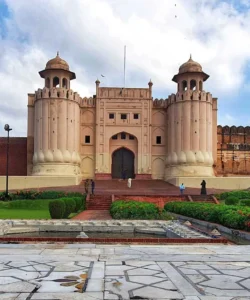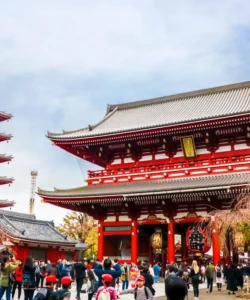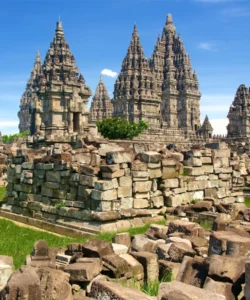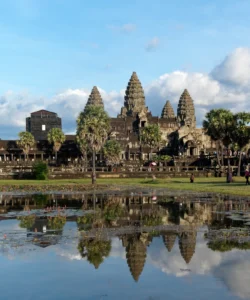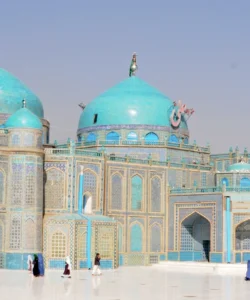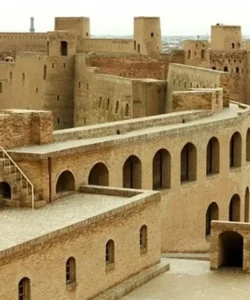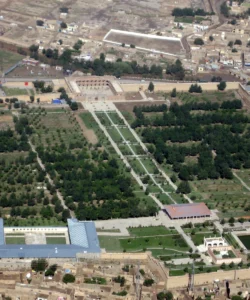The Gardens of Babur, also known as Bagh-e Babur, is a historic park and the final resting place of Zahir-ud-Din Muhammad Babur, the founder of the Mughal Empire. Located in Kabul, Afghanistan, it is an exquisite example of a traditional Mughal garden, renowned for its serene beauty, symmetrical design, and profound historical significance.
Name: Gardens of Babur (Persian/Dari: باغ بابر, Bāgh-e Bābur)
Address: The gardens are located in the Chahar Dehi District of Kabul, Afghanistan. They are situated on the lower slopes of the Shah-e Kabul mountain, near the Kabul River.
How to Get There:
Travel to the Gardens of Babur is currently extremely difficult and unsafe for general tourism due to the political instability in Afghanistan. The following information is for historical context and is not a recommendation for travel.
- By Air: The closest airport is Hamid Karzai International Airport (KBL) in Kabul.
- By Road: In more stable times, the gardens were easily accessible from any part of Kabul via road. Taxis and local transport would take visitors directly to the entrance.
- By Foot: The gardens are within walking distance of many parts of the city.
- Entrance Fee: Prior to recent events, there was a nominal entrance fee for visitors.
- Best Time to Visit: The spring and summer months (April to October) are ideal, when the flowers are in full bloom and the weather is pleasant.
Landscape and Architecture:
The Gardens of Babur are a beautiful example of a Mughal garden, characterized by its strict geometric plan, emphasis on symmetry, and the harmonious integration of natural and man-made elements.
- Charbagh Garden Design: The garden is laid out in the traditional Charbagh (four-part) style, a classic Persian-style garden that was a hallmark of Mughal architecture. It is divided into a series of 15 terraced sections, all descending from the hillside. The central axis of the garden is marked by a water channel, pools, and fountains.
- The Tomb of Babur: The centerpiece of the garden is the simple, open-air tomb of Emperor Babur. Following his will, his remains were brought here from Agra. The tomb is surrounded by a low marble screen, and a mosque (built by his grandson, Shah Jahan) stands above it on the 13th terrace. The simplicity of the tomb, with its modest marble cenotaph, stands in contrast to the opulent mausoleums of later Mughal emperors (like Humayun’s Tomb or the Taj Mahal). This reflects Babur’s desire to be buried in a humble, natural setting.
- The Mosque of Shah Jahan: A white marble mosque, built by Shah Jahan in 1645 CE, stands on a high terrace. Its three-domed structure is a beautiful example of Mughal architecture and serves as a prominent landmark within the garden.
- Caravanserai and Gates: The gardens originally featured an extensive caravanserai (a rest house for travelers) and a gatehouse, reflecting their function as a place of rest and recreation for the royal family and their guests. The current gatehouse is a restoration.
- Chahar Bagh Pavilions: The terraces once featured various pavilions, baths (hammams), and fountains. The Queen’s Palace and another building called the Harem Saray were also part of the complex.
- Lush Greenery: The gardens are home to numerous plant species, including towering cypress, pine, and poplar trees. The terraces are filled with flowerbeds, creating a beautiful and fragrant environment.
- Panoramic Views: The elevated position of the gardens on the hillside provides beautiful panoramic views of the surrounding city of Kabul and the Kabul River.
What Makes It Famous:
- Final Resting Place of Emperor Babur: The Gardens of Babur are globally renowned as the tomb of Zahir-ud-Din Muhammad Babur, the founder of the Mughal Empire. This direct link to one of the most significant figures in South and Central Asian history makes it a site of profound historical importance.
- Prototype of Mughal Gardens: It is the earliest and a key example of the Charbagh garden design that would become a hallmark of Mughal architecture across India, culminating in the gardens of Humayun’s Tomb and the Taj Mahal. It is often referred to as a “blueprint” for later Mughal gardens.
- UNESCO World Heritage Site (Tentative): The Gardens of Babur are on Afghanistan’s tentative list for UNESCO World Heritage status, recognizing their outstanding cultural and historical value.
- Symbol of Cultural Heritage: Despite decades of conflict, the gardens have endured and have been meticulously restored, becoming a powerful symbol of the resilience of Afghanistan’s cultural heritage.
- Historical and Political Significance: The gardens were not just a pleasure ground for the emperor but also a place of political significance, used for royal gatherings and ceremonies.
- A Symbol of Simplicity: The simple, open-air tomb of Babur is famous for its deliberate lack of grandeur, a powerful statement of the emperor’s personal wishes and a stark contrast to the colossal mausoleums built by his successors.
Differences from Some Other Wonders:
- Tomb of a Founder: While many monuments are for emperors or kings, the Gardens of Babur’s fame is tied to its status as the tomb of the founder of the Mughal Empire. This foundational significance gives it a unique place in Mughal history.
- Emphasis on the Garden, Not the Mausoleum: Unlike the Taj Mahal, where the grand mausoleum is the star attraction, the Gardens of Babur’s primary focus is on the beautiful garden itself and the spiritual ambiance it creates. The tomb is simple and open-air, with the garden as its main architectural and spiritual feature.
- Simplicity of the Tomb: The very simplicity of Babur’s tomb, which is essentially an unroofed cenotaph, is a defining characteristic and a fascinating contrast to the opulent, domed mausoleums built for later Mughal emperors.
- Prototype Role: The gardens are not famous as the “culmination” of a style but as the earliest and most direct example of the Charbagh garden design in the Mughal Empire, serving as a crucial point of origin for an entire architectural tradition.
- Historical Resilience: The gardens have a unique and profound modern history of being damaged and lovingly restored multiple times after decades of conflict, making their continued existence a powerful story of cultural resilience and a modern-day symbol of peace and hope.
- Open-Air Tomb: The open-air nature of Babur’s tomb is a key distinction from the enclosed, domed mausoleums that became the norm for later Mughal emperors.
- Geopolitical Context: The gardens are a highly significant cultural site in a country that has been a center of conflict for decades, giving them a different kind of importance and vulnerability than sites in more stable regions.
Gardens of Babur Photos:

































